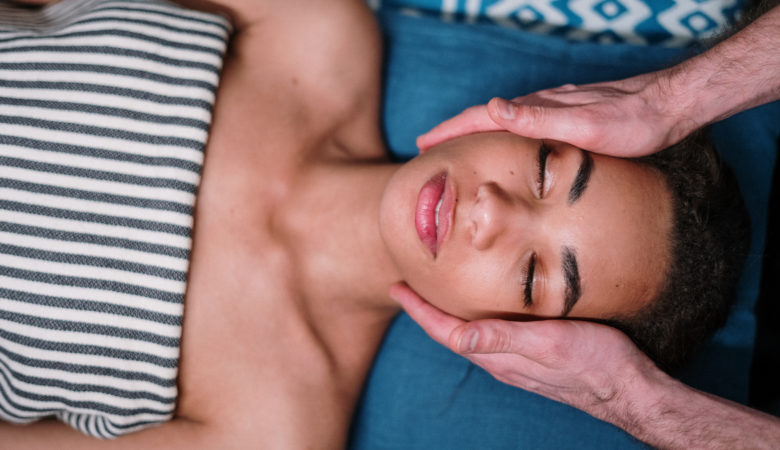Correcting Your Unbalanced Biofield Through Reiki

In a world increasingly plagued by social unrest, the COVID-19 pandemic and political chaos, energy healing and alternative medicine have become more popular than ever. In fact, they’re downright mainstream. Scroll through any Instagram feed and you’re bound to see slogans like “good vibes only” right below photos of crystal collections and plants. You probably have friends who use alternative medicine as a complement to traditional Western science—or maybe you’ve tried it yourself.
For anyone curious about energy healing, reiki is a good place to start (or continue) your journey. This Japanese technique, which started gaining popularity in the 1880s, stimulates the body’s energy fields and removes energetic blockages so the body can naturally heal itself. Here’s an overview of what reiki is, what it can and can’t do and what to expect if you give it a try.
What is reiki?
Reiki and energy healing in general have been around for millennia, but the beginning of modern reiki was developed in the 1880s. In the 1920s, a Japanese Buddhist named Mikao Usui helped teach 2,000 people the art of energy healing. It spread to Hawaii and the United States in the 1940s, and has been gaining popularity ever since.
Reiki is a spiritual practice that aims to direct and adjust the body’s energy (ki) to promote healing. It can be used to heal emotional pain, like depression and grief, or physical pain like wounds or chronic conditions. Reiki operates on the principle that the body has its own energy field, which you might see represented in other cultures as chakras, qi and meridians. Reiki practitioners direct energy through the other person’s body to remove blockages.
What is a reiki session like?
Reiki sessions can take place anywhere, but often are in a relaxing environment. The patient remains fully clothed and may sit or lie down. The practitioner will move their hands over or on the patient’s body in certain energy centers, or hold their hands over specific injuries if desired. You may feel tingling at these sites, even if the practitioner remains hands-off.
The sessions can last up to an hour and a half. They can be targeted toward specific issues, or overall well-being. Patients often report a feeling of deep relaxation during and after the sessions, while others report that it did heal their maladies.
Is there any scientific evidence to support energy healing?
Now that you’ve got the background, what we all want to know is…does it really work? Although no one really knows how (or can prove if) reiki works, there is some scientific support for the practice.
One theory is based on the fact that every human body has an electromagnetic biofield, which can be scientifically observed and measured. EKGs and MRIs both are able to measure the body’s electrical impulses. Every cell is either positively or negatively charged, which creates magnetic fields that can extend up to fifteen feet from the body. This biofield is thought to govern automatic bodily functions, like breathing, digestion and more. Changes in the biofield can bring about changes in the physical body.
If the biofield theory is correct, reiki might work due to the interactions between different people’s biofields. Reiki practitioners may be able to influence other biofields with their own energy, resulting in physiological changes.
Other practitioners, including physicists, suggest that quantum physics may be the reason reiki works. Quantum physics has observed that photons and electrons, which are tiny bits of energy, are actually capable of being in more than one place at the same time. In fact, intention, or directed thoughts, may be able to influence how the particles react to each other.
Could reiki practitioners be using quantum physics principles to influence healing? Dr. Christina L. Ross, Ph.D. writes, “Quantum physics teaches us there is no difference between energy and matter. All systems in the human being, from the atomic to the molecular level, are constantly in motion-creating resonance. This resonance is important to understanding how subtle energy directs and maintains health and wellness in the human being.”
Right now, research is inconclusive at best. However, there is plenty of evidence to suggest that patients get something out of it, whether it’s simply an hour of deep relaxation or genuine healing. There’s nothing to suggest that reiki is harmful in any way, particularly when used as a complementary treatment to western medicine.
If 2020’s got you stressed, anxious and/or depressed, maybe a reiki session is in order. It can’t hurt—and it just might help.

